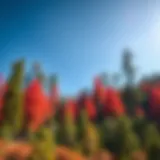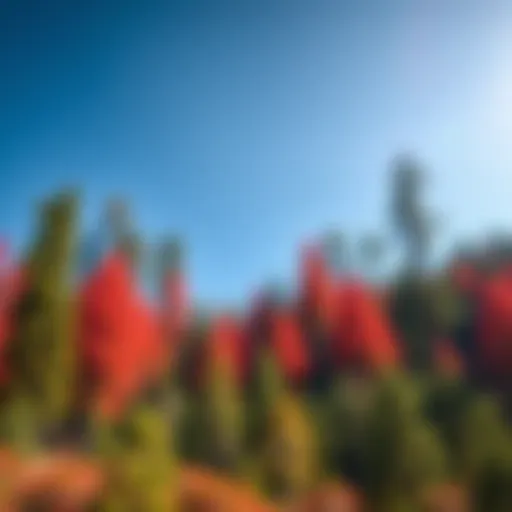Mastering Nature Photography: Tips and Techniques
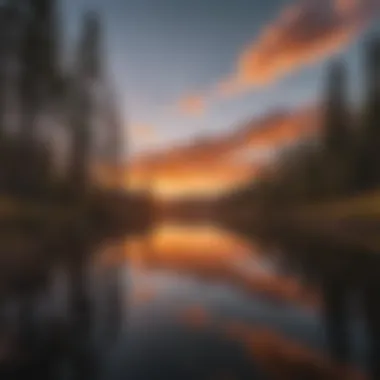

Intro
Nature photography is much more than simply pointing a camera at a beautiful scene. It's about capturing the intricate stories that unfold within the natural environment, expressing the subtleties of flora and fauna in their habitat. This craft requires both an artistic eye and a solid understanding of the ecosystem, making it crucial for practitioners to delve deeply into the art and science of this field.
As photographers venture into wooded landscapes, mountainous vistas, or serene lakes, every click of the shutter can reveal a new narrative, capturing fleeting moments in the tapestry of nature. Yet, to truly excel in this arena, individuals must navigate various components—equipment, composition, lighting, and the ever-important aspect of ethical practices in wildlife photography. Each of these elements plays a pivotal role in a photographer's ability to convey authentic representations of our world.
Moreover, many enthusiasts embark on this journey without a comprehensive grasp of the ethical implications of their actions in nature. This article aims not only to arm readers with tips and techniques but also to instill a strong sense of respect for the habitats they explore. By weaving together skills and ecological awareness, photographers can nurture their craft while preserving the essence of nature they wish to capture.
Overview of Forestry Practices
Definition of Forestry
Forestry encapsulates the management and cultivation of forests, making it a critical discipline responsible for the sustainable use and conservation of forest ecosystems. It involves activities like planting, nurturing, and harvesting trees while considering the overall health of the forest environment. Through an understanding of forestry, we can better comprehend how these practices contribute to environmental resilience.
Importance of Forestry in Ecosystem Management
Forests are often referred to as the lungs of our planet, playing a vital role in global oxygen production, carbon storage, and biodiversity support. Effective forestry practices help maintain ecological balance. They assist in habitat preservation for countless species while providing resources for human needs. These practices are integral in combating climate change and promoting biodiversity.
"The forest is not merely a mass of trees; it is an ecosystem where every leaf counts, and every branch tells a story."
A well-managed forest ensures that resources like timber, non-timber forest products, and recreational opportunities are available for future generations. Moreover, engaging in sustainable forestry practices fosters a connection between humans and nature, reminding us that forest ecosystems are shared spaces that deserve our respect and stewardship.
Sustainable Forest Management
Principles of Sustainable Practices
Sustainable forest management hinges on several core principles: maintaining forest health, ensuring biological diversity, fostering the economic viability of forest resources, and considering the social dimensions of forest use. The balance of these principles is essential in managing forests in a way that supports both ecological integrity and human requirements.
- Forest health: Ensuring forests are resilient to pests, diseases, and climate shifts.
- Biodiversity: Protecting a range of species and their habitats.
- Economic viability: Balancing profit with sustainability through responsible practices.
- Social dimensions: Recognizing and respecting the rights of indigenous communities and local populations.
Techniques in Sustainable Management
The application of sustainable techniques includes selective logging, reforestation, and effective monitoring of forest conditions. Through selective logging, only certain trees are harvested, minimizing the impact on the overall forest structure. Reforestation efforts restore ecosystems by introducing native species back into their habitats, aiding recovery from deforestation or disruption. Furthermore, employing technology like satellite imaging can provide critical data for assessing forest health, allowing for informed decision-making regarding management practices.
Ultimately, sustainable forest management empowers communities to engage in responsible stewardship, creating a synergistic relationship between humans and their environment.
Woodland Stewardship Strategies
Importance of Woodland Stewardship
Woodland stewardship embodies the responsibility of landowners and communities to manage their forested areas wisely. This stewardship is essential not only for the well-being of the forest itself but also for the surrounding communities that rely on these resources. By fostering biodiversity and protecting ecosystems, woodland stewards can ensure the longevity of forests for generations to come.
Best Practices for Landowners
Landowners can adopt several strategies for effective woodland stewardship:
- Conduct regular assessments: Understanding forest conditions guides necessary interventions.
- Engage in community practices: Collaborating with neighboring landowners can amplify stewardship efforts and share valuable knowledge.
- Educate on native species: Choosing native flora during planting can enhance local biodiversity and resilience.
- Implement trail management: Properly established trails can minimize environmental impact, providing access without causing undue harm to sensitive areas.
Each of these practices contributes fundamentally to the resilience and vitality of forest ecosystems. As a result, nature photographers who understand and incorporate these stewardship principles into their pursuit will find deeper connections to the landscapes they explore.
Understanding Nature Photography
Nature photography encompasses much more than just snapping pictures of beautiful landscapes or adorable animals. Understanding this art form is essential for both amateur enthusiasts and seasoned professionals alike. Why? Because it helps one to capture the essence of nature, not just its beauty.
This practice is an intricate dance between technology and artistry, requiring keen observation, an eye for detail, and a deep appreciation for the environment. The significance of understanding nature photography lies in its ability to foster a connection between the photographer and the natural world. This connection can lead to a more profound respect for nature, encouraging individuals to preserve and protect it.
By grasping the fundamentals, photographers can transform ordinary scenes into extraordinary images that tell a story, evoke emotions, and inspire others to see the world through a different lens. To truly master this craft, one must delve into various elements like composition, lighting, and equipment. Each of these aspects plays a vital role in the creation of stunning nature images, and beginning with a solid grounding in the subject is imperative.
"The best thing about nature photography is that it not only showcases the beauty around us but also highlights our responsibilities to keep it intact."
Defining Nature Photography
Nature photography is best understood as the art of capturing images of the natural environment, including landscapes, wildlife, plants, and other organisms in their naturally occurring settings. This genre seeks to depict life in its myriad forms, often showcasing the intricate relationships within ecosystems.
Nature photography can serve various purposes:
- Documentation: Capturing the essence of a place or species can provide valuable information for research and education.
- Artistic Expression: Many photographers use nature as a canvas, expressing their unique perspectives and emotional responses to natural phenomena.
- Awareness Raising: Images can highlight environmental issues, raising awareness about conservation efforts and inspiring viewers to take action.
Each photograph tells a story, whether it’s the quiet elegance of a forest at dawn or the frenetic energy of a cheetah on the hunt. To define nature photography is to acknowledge its multifaceted nature, where every click of the shutter has the potential to resonate with both the heart and mind of the viewer.
Historical Context
The roots of nature photography can be traced back to the mid-19th century when the first photographs of landscapes were created using primitive camera technology. Early photographers like Ansel Adams and Edward Weston began to push the boundaries of the medium, capturing striking images of the American West that celebrated its beauty while also advocating for conservation.
This art form evolved with advancements in technology, from large-format cameras to the digital imaging revolution of today. The transition from film to digital, for instance, has made capturing fleeting moments easier for photographers of all levels.
Moreover, the 20th century birthed an increased awareness of environmental issues, which was equally reflected in nature photography. Notable organizations like the Sierra Club and Nature Conservancy embraced photography as a powerful tool for advocacy, fostering a relationship between art and environmental activism.
As nature photographers today grapple with contemporary challenges like climate change and habitat loss, understanding this historical context provides important insight. It reveals how nature photography has served not just as an art form, but as a movement that champions the protection and preservation of our planet.
Essential Equipment for Nature Photography
In the realm of nature photography, having the right equipment is as crucial as honing one’s skills. The tools you choose can make or break your ability to capture stunning images of landscapes and wildlife. It’s about not just buying the most expensive gear but selecting equipment that aligns with your shooting style and goals. Opting for the proper components can mean the difference between a good image and a jaw-dropping one.
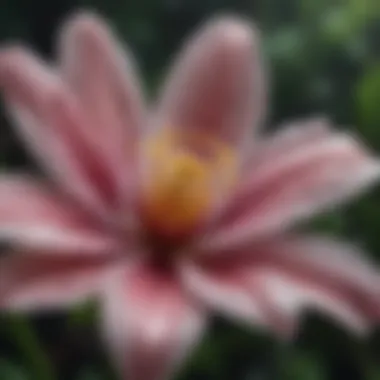

Cameras and Lenses
DSLR vs. Mirrorless
When it comes to choosing a camera, the debate between DSLR and mirrorless systems is a common one among photographers. Each type brings its own set of features.
DSLR cameras, with their mirrored viewfinder, offer a more traditional experience. They usually have longer battery lives and an extensive selection of lenses available, making them a popular choice for many nature photographers. However, they may be bulkier and heavier, especially if you’re trekking into remote areas with your gear.
On the flip side, mirrorless cameras are lighter and typically more compact, which can be a game changer when you're hiking long distances. They excel in video capabilities and often have faster shooting speeds. While they have come a long way in terms of battery life and lens availability, some still find it lacking compared to their DSLR counterparts.
Lens Types and Their Uses
The types of lenses you use are just as important as the camera body. Different lenses cater to various photographic scenarios, which can significantly expand your creative capabilities.
A wide-angle lens is essential for capturing expansive landscapes. It allows you to pull in more of the scene, rendering beautiful vistas and immersive environments. A telephoto lens, on the other hand, is indispensable for wildlife photography, enabling you to shoot subjects from a distance without disturbing them.
Then, there are macro lenses, which open a world of detail in nature photography. With these, it’s possible to capture the intricate beauty of flowers, insects, and small creatures. Each lens has unique features and advantages, and selecting the right one depends on your vision and the subjects you wish to portray.
Tripods and Stabilization Equipment
Stability is key in nature photography. Even the most skilled photographers can struggle with shaky hands or windy conditions. A good tripod can be a photographer's best friend, allowing longer exposure times without introducing blurriness to an image. Having a sturdy tripod can make all the difference when photographing landscapes in low light or trying to capture moving wildlife with precision. Additionally, stabilizing equipment like gimbals can enhance your ability to shoot video or dynamic shots smoothly.
Accessories to Consider
Filters and Hoods
Filters are often underused yet they can drastically improve your nature photography. A polarizing filter, for instance, enhances colors and reduces glare from surfaces like water or leaves, resulting in richer images. On the other hand, a neutral density filter can be a lifesaver during bright conditions, allowing you to use slower shutter speeds. Lens hoods also play an important role; they can help reduce lens flare and keep unwanted light at bay, ensuring that your photos maintain sharpness and contrast.
Camera Bags and Harnesses
When carrying your gear into the wilderness, your choice of bags and harnesses can affect not only convenience but also safety and accessibility. A good camera bag should be lightweight yet robust, providing adequate protection against the elements. Look for features like padded compartments and weather-resistant fabric. Harnesses can help distribute the weight of the camera and make it easier to draw your equipment when inspiration strikes. Choosing the right carrying solution is paramount for enjoying your photographic journey without unnecessary burdens.
Techniques for Capturing Nature
When it comes to nature photography, the techniques employed can make or break the final image. Knowing how to manipulate the camera, understand the settings, and compose the shot is crucial. These techniques give the photographer the ability to evoke emotion, capture detail, and present the beauty of nature in a way that resonates with viewers. It’s not just about having the right equipment; it’s about how one utilizes those tools to create impactful art.
Understanding the nuances of light, focus, and composition can elevate a photo from mundane to stunning. This section will cover various aspects of capturing nature, laying down a solid foundation for those looking to hone their skills.
Understanding Exposure
Exposure is a fundamental concept in photography, controlling how light hits the camera sensor. Getting it right can mean the difference between capturing a vibrant sunset or a washed-out sky. In nature photography, where lighting conditions can change in the blink of an eye, exposure settings should be adjusted thoughtfully.
Aperture, Shutter Speed, ISO
Aperture refers to the opening of a lens's diaphragm, affecting both the exposure and depth of field. A wider aperture (like f/2.8) lets in more light but creates a shallower depth of field, isolating the subject beautifully. On the other hand, a narrow aperture (like f/16) provides greater depth of field, ensuring more elements in the scene are in focus. This is particularly useful in vast landscapes where the foreground and background are equally important.
Shutter speed, the duration the camera’s shutter is open, impacts the motion captured in an image. Fast shutter speeds freeze action, ideal for wildlife photography, while slower speeds can be employed to create a sense of motion in waterfalls or waves, adding a dreamy quality.
Lastly, ISO measures the sensitivity of the sensor to light. A higher ISO allows for photography in lower light conditions, but it can introduce noise. Balance is key; too low an ISO can yield dark images while too high can muddy a photo's clarity.
Focusing Techniques
Focusing can drastically affect the sharpness and clarity in nature photos. Knowing when to switch between manual and automatic focus is essential.
Manual vs. Autofocus
Manual focus gives photographers the greatest control, especially in tricky lighting situations or when photographing small subjects like insects. You can precisely choose the point of focus, ensuring exactness in compositions that require finesse. However, it can be challenging when quicker adjustments are needed.
Autofocus, particularly useful in wildlife and action photography, can swiftly adjust to moving subjects. Modern cameras have advanced autofocus systems, making it easier to capture sharp images in dynamic settings. Still, relying solely on auto can be risky; it might focus on the wrong area in complex scenes. Each system carries its strengths, and understanding when to use which will enhance one’s proficiency.
Focus Stacking
Focus stacking is a technique that allows photographers to combine multiple images taken at different focus points into a single shot. This is particularly valuable in macro photography or landscapes with intricate details. By merging these images in post-processing, the resulting photo achieves a depth of field that exceeds the camera’s capabilities on its own. While it requires additional steps in editing, the clarity and detail it brings are often worth the time invested.
Composition Principles
Effective composition is what often separates a good photograph from a great one. Mastering basic rules can lead to captivating imagery.
The Rule of Thirds
The Rule of Thirds is a classic guideline, suggesting dividing the image into a 3x3 grid. By positioning key elements along these lines or at their intersections, images feel more balanced and engaging. This principle provides a structure without confining creativity. It’s beneficial for guiding the viewer’s eyes naturally across the photograph.
While beneficial, this method shouldn't be rigidly applied. Break it when needed for creative purposes. Experimentation is crucial; the unexpected often leads to unique and compelling images.
Leading Lines and Depth
Leading lines are compositional elements that guide the viewer's gaze through an image. This technique creates depth and draws attention to the main subject, making the photograph more engaging. Natural features, like rivers or paths, can act as these lines, creating a path for the eyes.
Depth can also be enhanced by layering different elements within the scene. Placing objects in the foreground, mid-ground, and background makes images feel three-dimensional and immersive. This technique invites viewers to explore the intricacies of the landscape.
In summary, mastering these techniques, from understanding exposure and focus to composition principles, lays the groundwork for capturing striking nature photographs. It’s about being aware of the environment and knowing when to adjust the settings, making every shot count.
The Role of Light in Nature Photography
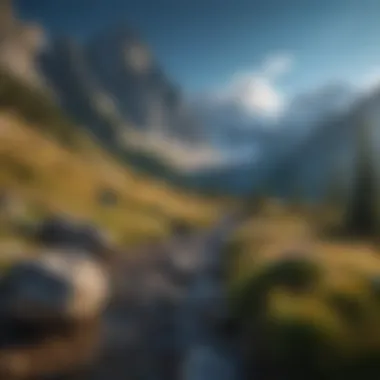

Light plays a crucial role in nature photography, acting as both the primary medium through which images are captured and the driving force behind the emotional quality of a photograph. Without light, even the most stunning landscapes and intricate wildlife details would remain hidden. Understanding how light interacts with different subjects can elevate your photography from mere snapshots to artful reflections of nature's beauty.
In the realm of photography, light defines everything from mood to shape. It can soften harsh lines or accentuate textures, guiding the viewer's eyes to the focal points of an image. Each type of light, whether soft or harsh, warm or cool, lends itself to different storytelling and emotions throughout a photograph. For nature photographers, mastering the nuances of light is paramount in capturing evocative images that resonate with viewers.
Golden Hour and Blue Hour
The golden hour, that magical time shortly after sunrise and before sunset, is often considered the ideal lighting condition for nature photography. During this period, the sun casts a warm, golden hue, which can transform ordinary landscapes into exceptional shows of color and texture. The shadows are longer, creating depth and dimension in images, making details pop in a way that harsh noon light simply cannot replicate.
On the other hand, the blue hour, which occurs just before sunset and after sunrise, drapes the world in a cool, bluish light. This time of day is more subtle but can be equally stunning, perfect for atmospheric shots where mood is paramount. The contrast between light and shadow becomes softer, allowing for a dreamy quality in landscapes, while twinkling city lights can offer a striking counterpoint to the cool tones of dusk or dawn.
Both these periods not only enhance the aesthetic appeal of photographs but also allow photographers to convey emotions effectively. Mastering these hours can significantly impact the way nature photography is viewed and appreciated.
Weather Conditions
Weather conditions drastically influence light and subsequently your photographic results. Understanding and utilizing the variety of conditions can lead to some outstanding images.
Utilizing Overcast Skies
Overcast skies can often be viewed as a photographer's best friend. Contrary to the commonly held notion that sunny conditions are ideal, cloudy weather provides a natural diffuser for sunlight. This results in even lighting that minimizes harsh shadows and highlights, allowing for more nuanced details to emerge in both foreground and background.
Moreover, overcast settings can lend a dreamy quality to images. The soft light tends to saturate colors, bringing vibrancy to foliage and wildlife. Photographers can capture dramatic contrasts in texture and tone, creating artwork that reflects the depth of the landscape.
A unique feature of utilizing overcast skies is that it offers an opportunity for capturing fine details in nature without the risk of glare. This quality makes cloudy days particularly advantageous for macro photography, where the intricate details of insects or flowers can be highlighted beautifully without distractions.
However, it’s essential to account for the potential flatness that such conditions may impart. Photographers often need to find creative compositions to overcome this uniformity.
Conditions for Dramatic Shots
When it comes to capturing dramatic shots, specific weather conditions can offer some compelling subjects. Stormy weather, for example, can enhance atmosphere immensely. Dark clouds, bolts of lightning, and rain can create a sense of tension and power in images.
The key characteristic of such weather is its unpredictability and the emotions it can invoke. Capturing these fleeting moments can lead to stunning pictures that depict nature’s raw energy. Just remember, safety should always be a priority.
Mist and fog are another set of conditions that can add a unique feature to your photography. The veil they create can give a sense of mystery to landscapes, shrouding details while inviting curiosity. The softening of hard lines can create almost ethereal imagery, perfect for those looking to express emotion.
However, the challenge lies in the moment; these conditions may shift quickly. Photographers must remain alert and ready to capture these fleeting opportunities when they arise.
"Light is the architect of your photograph, sculpting it into something extraordinary. Choose your moments wisely."
Understanding the role of light and weather conditions allows nature photographers to better frame their work and articulate their perspectives, ultimately leading to a richer body of work.
Light isn't just an accessory; it’s the heart and soul of photography.
Ethical Considerations in Nature Photography
Nature photography goes beyond simply capturing beautiful images of wildlife or landscapes; it carries an ethical weight that every photographer needs to consider. The responsibility that comes with photographing nature often means making conscious choices that prioritize the well-being of the environment and its inhabitants. By understanding and adhering to these ethical considerations, photographers can contribute positively to the conservation of natural spaces and the protection of wildlife.
Respecting Wildlife
Minimizing Disturbance
A core principle in nature photography is minimizing disturbance to wildlife. This means being aware of how your presence influences the natural behavior of animals. Often, wild creatures are sensitive to human activities, which can disrupt their routines. For instance, approaching too closely can cause stress to animals, leading them to abandon their nests or flee from feeding areas. Therefore, it is vital to keep a respectful distance, using long lenses that allow for close-up shots without the physical presence that may disturb the subject.
The key characteristic of minimizing disturbance is its emphasis on conservation. When photographers make an effort to observe wildlife without imposing, they contribute positively to the ecosystem. This approach helps ensure that natural habitats remain untouched and wildlife is not subjected to unnecessary stress. However, one challenge arises when the need for great shots tempts some to disregard these principles, potentially harming the very subjects they wish to showcase.
Avoiding Baiting
Another critical ethical aspect is avoiding baiting. This practice involves luring animals with food or other stimuli to achieve a more favorable shot. While it can result in visually stunning photographs, baiting distorts the natural behavior of wildlife, often leading to dependency on human-provided food. This can change migration patterns, impact health, and, in some cases, put the animals in harm’s way. Furthermore, animals that grow accustomed to human food sources might become more vulnerable to dangers like poachers or traffic.
The popularity of avoiding baiting lies in its role as a sustained practice of respect for wildlife. Instead of manipulating environments for the sake of art, many photographers advocate for capturing genuine interactions in their natural state. It requires more patience and skill but promotes an authentic representation of nature, which can resonate more powerfully with viewers.
Environmental Responsibility
Engaging with nature photography inherently involves a commitment to environmental responsibility. Photographers hold the power to influence people’s perceptions of the natural world. Thus, it's essential to use this platform to champion conservation efforts instead of contributing to environmental degradation.
Following Leave No Trace Principles
Central to environmental responsibility is following the Leave No Trace principles. This set of guidelines encourages outdoor enthusiasts to minimize their impact on nature by maintaining cleanliness and being considerate of habitats. For instance, walking on designated paths helps avoid trampling on flora, while proper waste disposal preserves the integrity of natural settings.
The key appellation of Leave No Trace is its intention to protect ecosystems. By leaving areas as you found them, you’re contributing to the preservation of the environment for future generations, which aligns perfectly with the goals of nature photography. However, one difficulty arises in remote areas where resources are scarce, making it challenging to adhere strictly to these principles.
Sustainable Practices in Photography
Adopting sustainable practices in photography can significantly reduce environmental impact. This includes using eco-friendly materials, opting for digital over film processes, and supporting conservation initiatives through your work. When photographers role-model sustainability, they inspire others to do the same, creating a ripple effect that encourages responsible behavior in the community.
The unique feature of sustainable photography is that it doesn't compromise on creativity. Nature photographers can explore innovative ways to capture stunning visuals without harming ecosystems. This balance between artistic expression and ecological integrity showcases that it is possible to indulge artistic pursuits while being mindful of environmental consequences.
Adopting ethical practices isn’t just good for the planet; it also enhances the credibility and authenticity of your work. Skilled nature photographers are often the best advocates for the environments they cherish and prioritize, finding ways to capture the profound beauty of nature without compromising its health or safety.
To sum up, by emphasizing the importance of ethical considerations in nature photography, photographers can ensure that their passion contributes constructively to environmental stewardship. Respect for wildlife and a commitment to sustainable practices ultimately create a better narrative for both the photographer and the environment.
Post-Processing Techniques
Post-processing is the unseen hero in the realm of nature photography. After you've patiently waited for the right moment, captured the scene, and perhaps hiked to an unusual location, the editing phase takes precedence in shaping your final masterpiece. It’s not just about correcting flaws but enhancing the story your photograph tells. Trust me, even the most stunning shot can benefit from a bit of finesse.
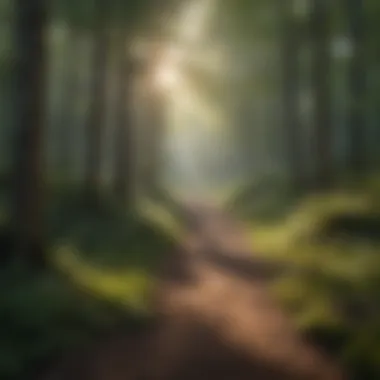

Hence, understanding various post-processing techniques can be a game changer. From making minor corrections to completely altering a photograph’s tone and feel, the tools at your disposal can either elevate or diminish your work. And therein lies the power of post-processing; it empowers you to transform your vision into reality.
Editing Software Options
Lightroom and Photoshop
Lightroom and Photoshop are mainly the power couple in the editing world. With Lightroom, you have a more streamlined approach to adjustments, focusing on enhancing the overall look without getting lost in too many details. It’s built for photographers who need to work on multiple images efficiently. Most noteworthy is its non-destructive editing feature—any changes can be reverted back, which means you can be creative without worrying about losing your starting point.
On the other hand, Photoshop dives deeper into the nitty-gritty, allowing for complex manipulations and pixel-level editing. It’s famous for its layers and masking capabilities, which give photographers a high degree of control. However, the learning curve is steep, making it less intuitive for beginners. If your focus is on detailed touch-ups and creative composites, Photoshop is an ally you shouldn't overlook.
Both software tools shine in their niches, and understanding when to utilize each can significantly impact your final output.
Free Alternatives
If you’re just starting or on a budget, free alternatives to Lightroom and Photoshop abound, such as GIMP and Darktable. These tools offer a solid suite of functionalities that can rival some of their paid counterparts. For instance, GIMP has comprehensive features for retouching, similar to Photoshop, with robust customization options. People find it appealing because it’s completely free, which eliminates that financial barrier.
Darktable serves as a great alternative to Lightroom, specializing in raw photo editing. Its interface mimics Lightroom’s workflow, making the transition smoother for those accustomed to Adobe’s system. However, while these programs provide powerful tools, the trade-off often includes a steeper learning curve and might lack some user-friendly features of their paid counterparts.
Basic Photo Corrections
Cropping and Resizing
Cropping and resizing are fundamental yet pivotal aspects of post-processing. This technique allows you to frame your subject better and eliminate distracting elements from the edges. By focusing on what's important, you can convey your message more clearly. An added bonus? It can improve your composition without needing to shoot again.
Whether you're refining the aspect ratio for social media sharing or fine-tuning with the Rule of Thirds, cropping gives you creative control over the viewer's perspective. On the flip side, excessive cropping might lead to a loss of resolution, making your image appear pixelated; thus, moderation is essential.
Color Adjustment Techniques
Color adjustment techniques can radically change the mood and emotion of a photograph. By adjusting the white balance, saturation, and contrast, you can bring your image closer to how you experienced the scene or convey a specific feeling.
The key characteristic of this technique lies in its ability to breathe life into an otherwise flat image. For example, you can push those greens in a forest scene or soften the tones in a sunset, amplifying the perpetual drama in the moment. However, caution is advised—overdoing adjustments can lead to unnatural colors that make your image feel less authentic. It’s always a balancing act between enhancing beauty and maintaining realism.
"Photography is the story I fail to put into words." - Destin Sparks
In summary, understanding these techniques can empower you in editing, from basic corrections to more advanced surreal alterations. Each piece of software and each adjustment technique offers unique features that can highlight your skills and style. By mastering the art of post-processing, you not only improve your final image but also enrich your photographic journey.
Building a Portfolio
Creating a solid portfolio is paramount for any nature photographer. It's more than just a collection of images; it's a visual narrative that showcases your unique style, perspective, and expertise. A well-curated portfolio illustrates not just technical skill, but also your ability to connect with the environment and convey its beauty to an audience. In a field as competitive as nature photography, this element can make or break your career.
Selecting Your Best Work
When it comes to building your portfolio, the selection process deserves careful attention. Start by reviewing all your photographs, but don’t just focus on the most visually appealing ones. Consider the emotional impact of each image. Does it tell a story? Does it convey a sense of place? Aim for diversity—include different environments, subjects, and moods. This variety not only showcases your adaptability but also gives viewers an insight into the breadth of your skills.
Select about 15 to 20 of your strongest images for your portfolio. Keep in mind that quality trumps quantity. If you feel unsure about a particular piece, it's probably best to leave it out. Cohesion is crucial; aim for a consistent aesthetic or thematic focus throughout the collection. As you progress in your photography journey, revisit and refine your portfolio regularly—the first drafts will always evolve.
Displaying Your Photography
Online Galleries vs. Print
The choice between online galleries and print forms an integral part of displaying your work. Online galleries offer a broad reach, allowing you to share your images with a global audience. They often come with interactive features, making it easy for viewers to engage with your work. Moreover, you can curate an online gallery that reflects your most recent work, keeping it fresh and relevant. However, depending on the platform, image quality can sometimes take a hit, leaving you with lesser resolution compared to prints.
On the other hand, prints possess a tactile quality that many find compelling. A solid print can speak volumes about the craftsmanship that went into the photograph. They also deliver an experience that viewing an image on a screen simply can't match. You might find smaller local art exhibitions worth exploring, as they provide an opportunity to connect with the audience face-to-face. Just keep in mind the costs of printing and framing, which can add up quickly.
Social Media Strategy
A robust social media strategy is more than just posting pretty pictures; it's about building a narrative around your work. Platforms like Instagram and Facebook present a unique opportunity to engage with your audience. Regular posting, complemented by relevant hashtags, can expand your reach significantly and provide invaluable feedback from followers and fellow photographers alike.
Interactive posts—like stories where you explain your techniques or share behind-the-scenes glimpses—can create deeper connections with your audience. Additionally, social media can act as a springboard for networking with other professionals or potential clients.
However, keep in mind that social media is a double-edged sword. Being overly dependent on it for exposure can result in a portfolio that lacks depth. Focus on maintaining a balance between your online presence and traditional forms of showcasing your work.
A well-rounded portfolio that combines online galleries, prints, and a strong social media presence can enhance your credibility and visibility in the saturated field of nature photography.
Engaging with the Photography Community
In the world of nature photography, engaging with the photography community can be a game changer. It opens doors for collaboration, feedback, and learning, enriching one’s skills while fostering connections that inspire creativity. Networking with peers allows photographers to share experiences, discuss challenges, and celebrate successes—vital components in honing one's craft.
Participating in Local Workshops
Local workshops are more than just events; they are immersive experiences that offer a practical, hands-on approach to learning. When you participate in these workshops, you gain access to knowledgeable instructors who often share valuable insights and techniques not found in textbooks. Imagine standing next to an expert in a field, camera in hand, as they demonstrate how to capture that elusive moment of golden light.
Not only do you improve your technical skills, but you also have the chance to meet fellow photography enthusiasts with similar interests. These gatherings tend to foster camaraderie, which can lead to fruitful collaborations long after the workshop has ended. Local flora and fauna also serve as subjects for your work, reinforcing a connection to the environment that can be deeply fulfilling.
Connecting Online
Photography Forums and Social Networks
Online platforms dedicated to photography create diverse avenues for sharing work, seeking inspiration, and finding constructive criticism. Engaging in photography forums and social networks can serve as your lifeline when it comes to navigating through the intricacies of nature photography. These platforms offer a vast pool of knowledge, consisting of both amateur and experienced photographers eager to share tips and tricks.
One key characteristic of photography forums is their focus on community-driven interaction. Unlike social media, where likes and shares rule the day, these forums encourage meaningful conversations about techniques, gear, and creative processes. A noteworthy feature of platforms like Reddit or even niche sites focuses on specific photography aspects—people discussing lens choices, composition strategies, or ethical practices in nature photography. However, while enriching, these discussions can sometimes veer off into territory that's less relevant, so it's vital to curate your feed wisely.
Critique and Feedback Culture
The critique and feedback culture that permeates these online communities cannot be overstated. It plays a significant role in the growth of photographers seeking improvement. Members often provide feedback that's both insightful and constructive—offering praise where it’s due while also pointing out areas for enhancement.
This culture encourages a mindset of continuous improvement, allowing photographers to evolve their styles over time. What makes the critique culture special is its emphasis on direct, thoughtful discourse; rather than simply exchanging compliments, photographers engage in detailed discussions that challenge the norm and promote growth. It can sometimes be intimidating to share work in such spaces, but the rewards often outweigh the risks. Through personalized feedback, one can refine their techniques and develop a sharper eye for details that might otherwise go unnoticed.
In summary, engaging with the photography community—whether through local workshops or online interactions—offers invaluable opportunities for learning and growth. By cultivating these relationships, photographers arm themselves with knowledge that not only enhances their artistry but also enriches their passion for nature itself.
As you journey through the depths of nature photography, remember that every image tells a story, and so does every interaction in the communities you choose to partake in.




